The Five Living Species Of Loons
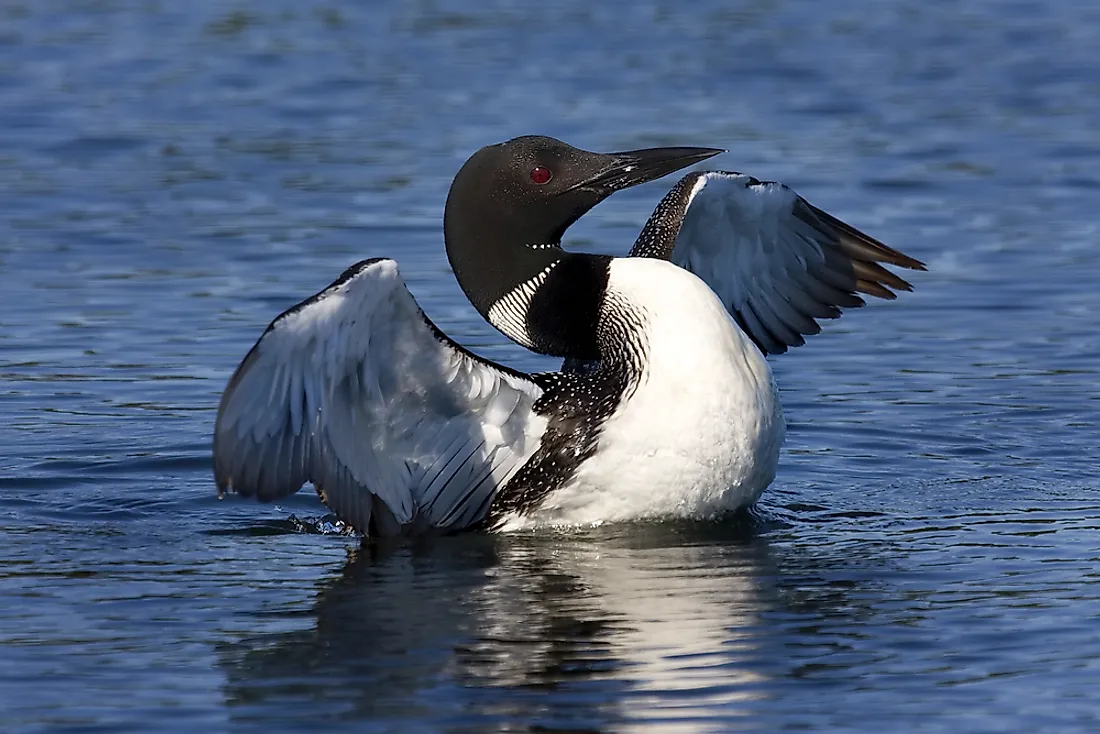
The loons (as they are known in North America), also known as divers in the UK, are aquatic birds of the Gavia genus and Gaviidae family. Loons spend most of their lifetime in water as they cannot walk efficiently. They are excellent swimmers and powerful fliers. However, they need to run for a sufficient distance across the surface of the water to generate enough force to take-off. They are capable of long-distance migration once they are airborne. Fish constitute the main diet of these birds. They often swallow small pebbles in the bed or shores of the waterbody to assist in digestion.
5. Red-throated Loon
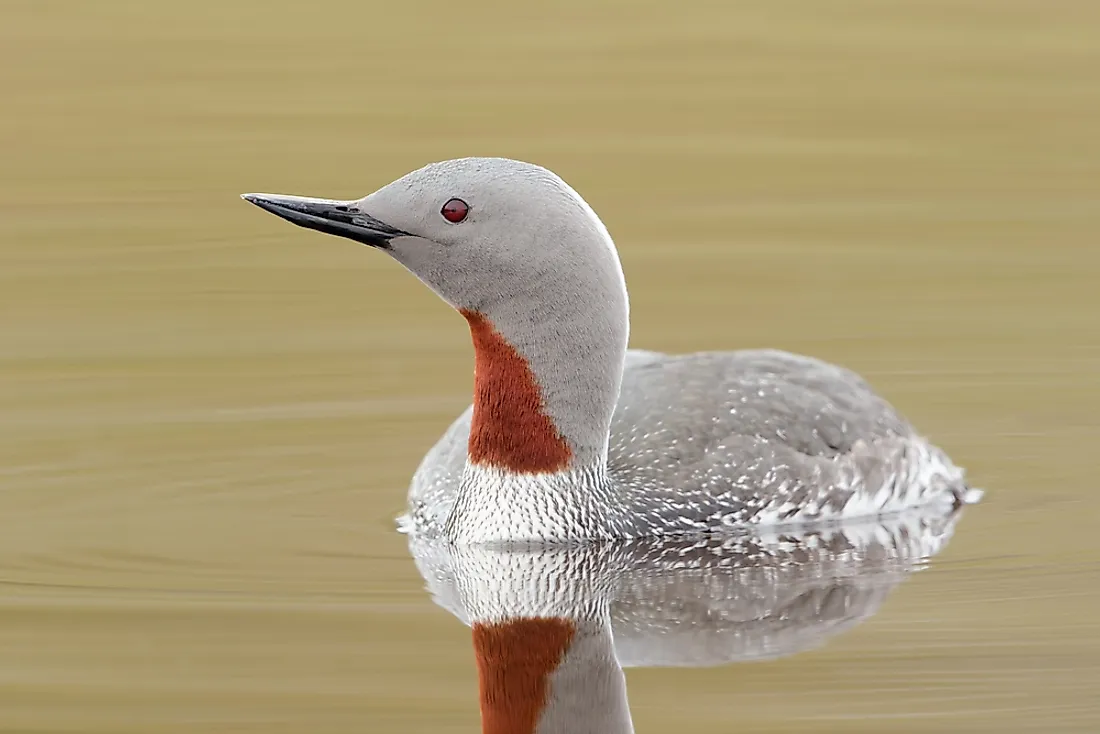
The Gavia stellata is the most widely distributed species of loon that breeds in the Arctic regions of North America and Eurasia and winters in the coastal waters of the northern areas. Being the smallest of the loon species, the red-throated loon is about 55 to 67 cm in length. During the non-breeding season, the bird is grayish above and has white underparts. During the breeding season, it develops a distinct reddish throat patch from where it derives its name. The red-throated loon eats fish, amphibians, invertebrates, and occasionally vegetative matter. The species is monogamous and is known to exhibit long-term bonding as mating pairs.
4. Black-throated Loon
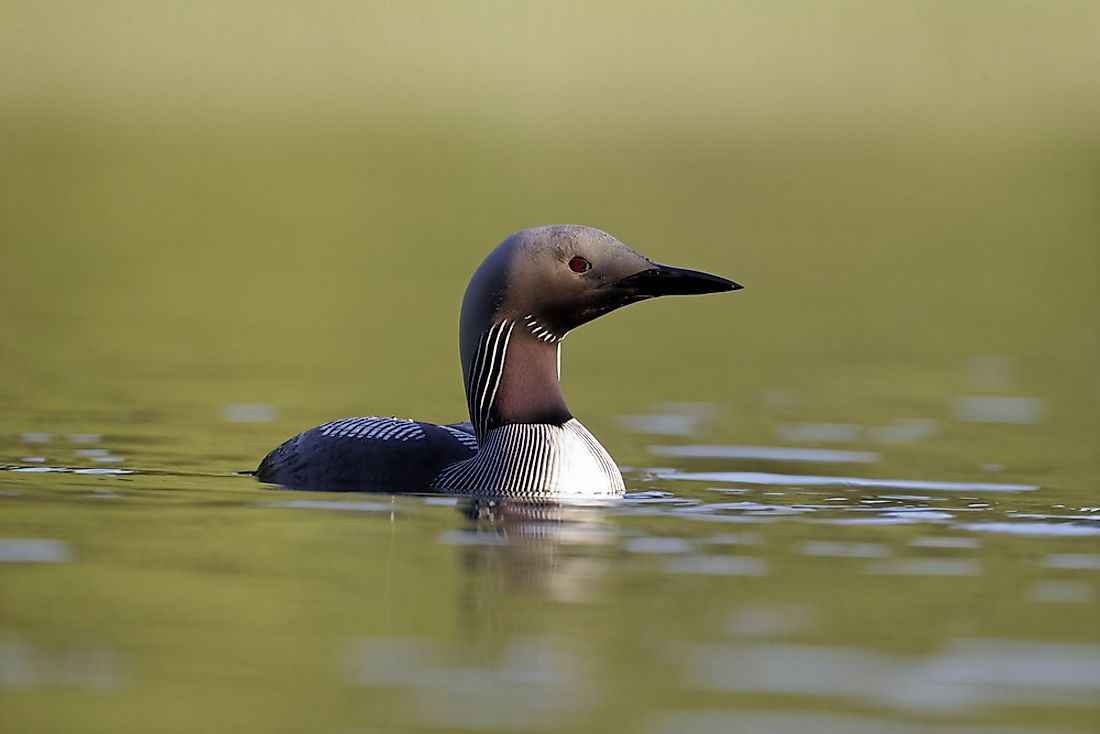
The Gavia arctica that is known by the name of black-throated diver in Eurasia and Arctic loon in North America, is an aquatic bird of the Gavia genus. Two subspecies of this bird, the Gavia arctica arctica and the G. a. viridigularis are recognized. The birds are 58 to 77 cm in length. The birds breed in Eurasia and western Alaska. They migrate towards the coastal areas, large lakes, and the open sea for wintering. The Arctic loon is less social than the other species of loons and usually gathers in flocks of about eight individuals. They feed on fish, crustaceans, mollusks, and also plant matter in their habitat.
3. Pacific Loon
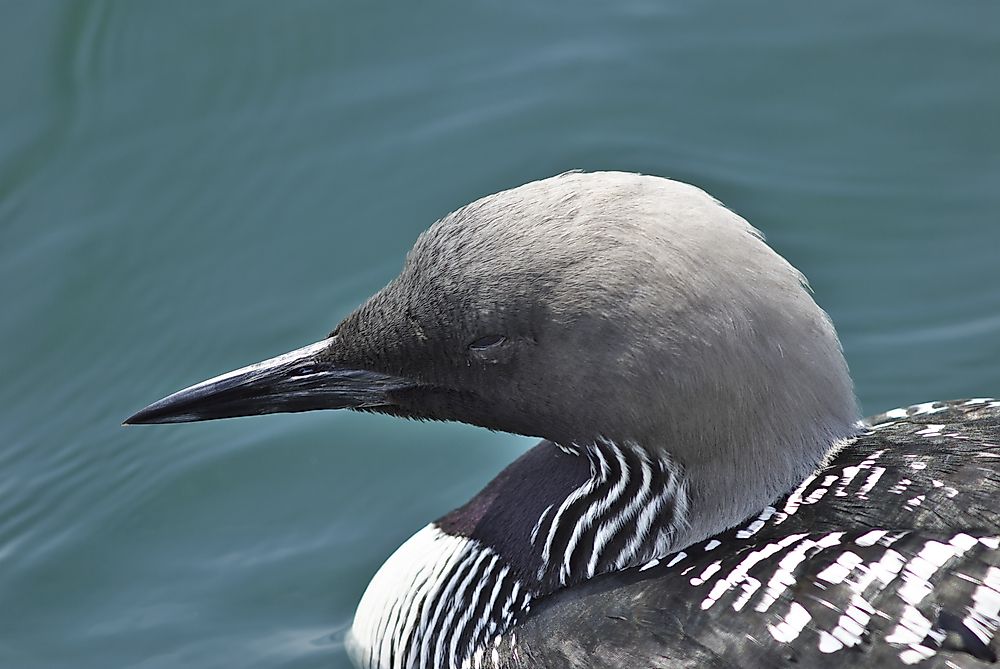
The Gavia pacifica breeds in the tundra lakes of Canada and eastern Siberia and winters primarily on the Pacific coast where it can be spotted in the open sea or large lakes. The bird closely resembles the black-throated loon. It is medium-sized with a length ranging from 58 to 74 cm. The head of the loon is gray in color, throat is black, the bill is whitish or gray, the mantle has chequered black-and-white plumage, and the underparts are white. The non-breeders have a drabber plumage. The Pacific loon is distinguished from the black-throated loon by the absence of a white patch at the flank. The sound of the bird can be described as a yodelling wailing call at a high pitch. Other sounds produced by the bird includes barks and harsh growls.
2. Common Loon
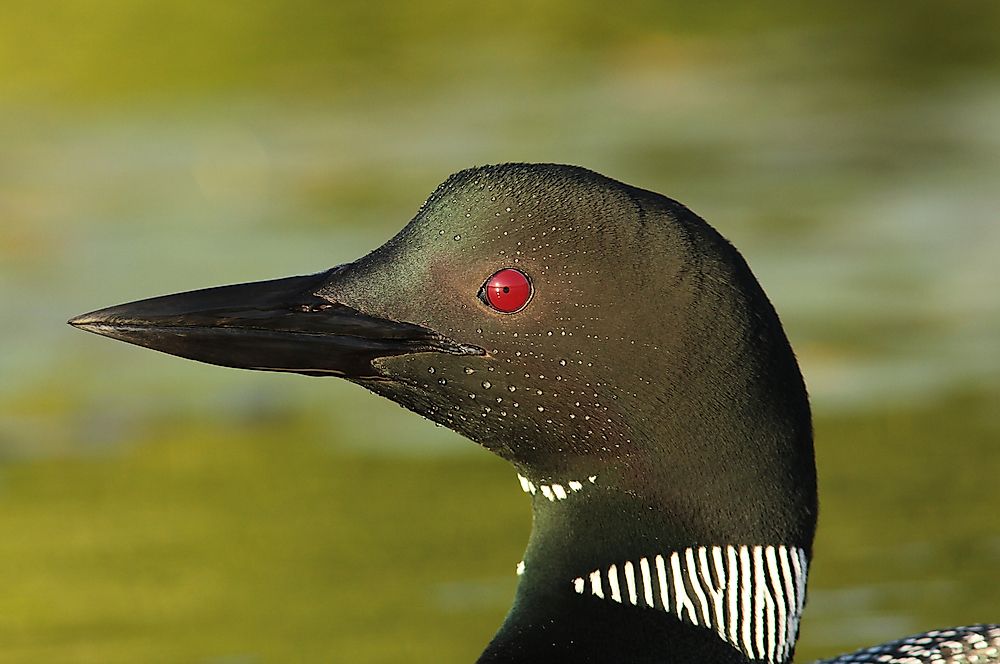
The Gavia immer, also known as the great northern diver, is a species of Gavia that lives in the lakes and other aquatic habitats in northern US and Canada. The loons prefer lakes with sheltered habitats like coves and islands for safety. They also prefer to live in aquatic habitats with clear water and high fish population for ease of feeding. The water body must also be large enough to allow the birds to take-off. During winter, the common loons fly to the nearest aquatic habitats that do not freeze during the cold season. They winter as far south as Texas and Baja California and as far east as northwestern Europe. The size of the common loon ranges from 61 to 100 cm. In the breeding season, the adults have a black head and white underparts. The mantle plumage is checkered black-and-white. The bird’s bill is black-blue in color. The common loon is recognized as a Least Concern species due to its relatively large distribution and significant population.
1. Yellow-billed Loon
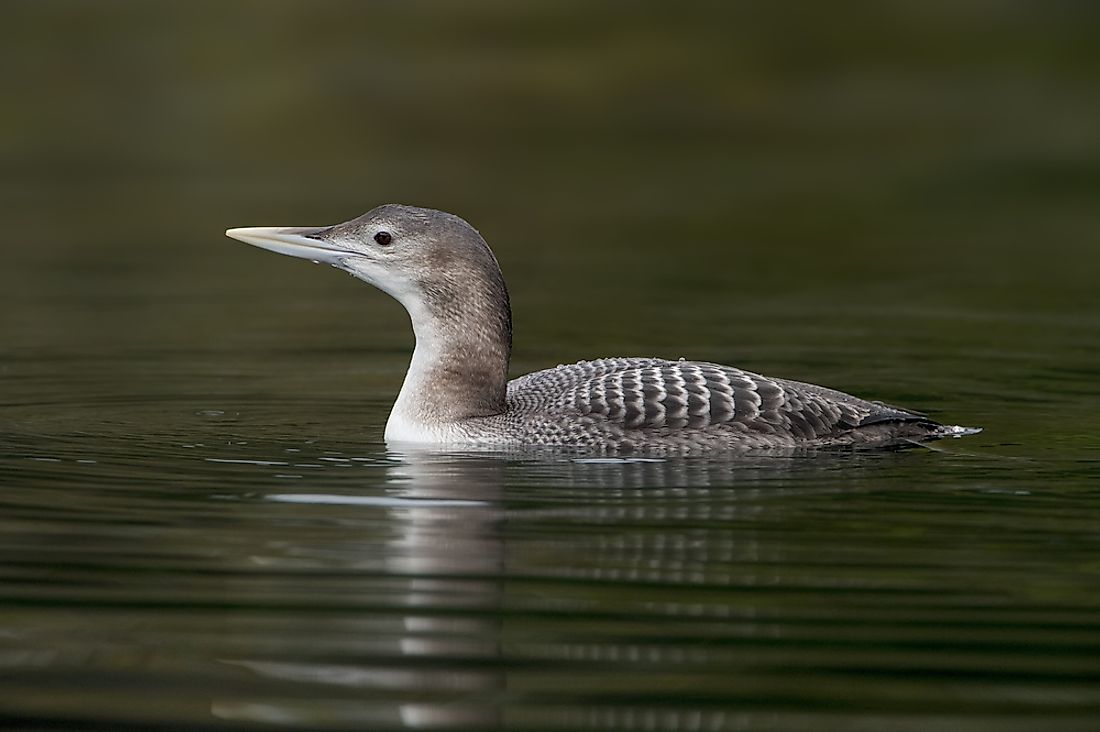
The Gavia adamsii is the largest species of Gavia. The species breeds in the Arctic region and winters along the North Pacific Ocean’s coasts and Norway’s northwestern parts. The head of the bird is black, the mantle is a chequered black-and-white, and the underparts are white in color. The plumage of the bird is drabber in the non-breeding season. The bill is straw-yellow in color. The yellow-billed loon dives underwater to catch its prey which is primarily fish. The call of the bird is an eerie wail with a lower pitch than the common loon. Unsustainable subsistence harvesting of the bird by the indigenous people in its habitat is the biggest threat to this species. The bird is thus recognized as “Near Threatened” by the IUCN.











